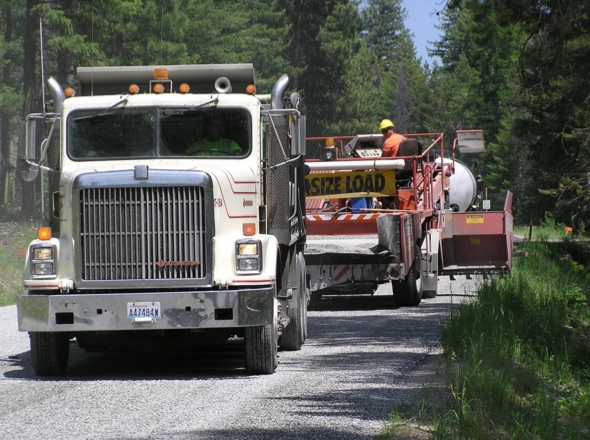Building roads and highways can be dangerous work. Data collected by the Bureau of Labor Statistics indicates that for road construction workers in the United States, the number of deaths due to work zone accidents averages over 100 per year. In addition, thousands of road construction workers each year are injured in non-fatal accidents.
Dangers in a road construction work zone can come from a variety of hazardous conditions like the physical characteristics of the work zone (like slopes and drop-offs) and exposure to loud noises. We’re going to focus on one hazardous condition that contributes to or is responsible for a majority of accidents in the work zone. That is blind spots. Specifically we will cover what blind spots are, blind spots as they relate to backing equipment and how to stay visible on the job site.
Understanding Blind Spots
What is a blind spot? A blind spot is the space around a vehicle or piece of equipment that is not visible to the operator. From the operator’s position on the machine, a certain amount of visibility is available through direct line of sight and with the use of mirrors, but the coverage is not complete.
 What can you do about blind spots? When you are in the work zone, you want to avoid these blind areas and stay in visual contact with the operator. In some situations, a spotter may be necessary to help the operator look out for workers and obstacles.
What can you do about blind spots? When you are in the work zone, you want to avoid these blind areas and stay in visual contact with the operator. In some situations, a spotter may be necessary to help the operator look out for workers and obstacles.
How do you know where the blind spot really is? A basic rule of thumb is that if you can’t see the operator, the operator also can’t see you. You can also use the concept of a safety circle. A safety circle is an imaginary boundary around a piece of equipment that encompasses any blind areas and any equipment arm swing distance. Workers outside the circle are generally safe around that piece of equipment, while anyone inside the circle is at greater risk of being injured.
Backing Equipment and Blind Spots
Why is backing equipment especially important? Backing equipment presents special safety concerns, since it divides an operator’s attention between the controls and the direction of travel. The operator’s field of visibility may also be more limited when backing up.
What can you do to stay safe around backing equipment? To help everyone stay safe around backing equipment, all equipment must have functioning backup alarms. These alarms typically are repeated sound (such as audible beeps) and/or flashing lights that get the attention of anyone who may be in the path of the backing equipment. Sometimes, dump trucks, tack trucks, and traffic control vehicles are also equipped with video cameras or sonic detectors to alert the driver to potential obstacles in their blind spots.
While alarms are an important component of awareness, staying alert, looking out for your fellow workers, and the user of spotters are necessary ingredients to help ensure everyone’s safety. Below is a link to a preview of our Work Zone safety course which talks more in depth about staying safe around blind spots around equipment.
Staying Visible – High Visibility Apparel
What is high visibility apparel? High visibility apparel is worn on the outermost layer with material that is certified for color, brightness and retro-reflective material in various positions. The objective of wearing the apparel is to have the worker be visible from a distance of at least 1,000 feet. To be effective, high visibility apparel must be kept in good condition. If the material gets too dirty or dull, it no longer does its job. Remember, some form of high visibility apparel should always be worn in the work zone.
Safety in the work zone is everyone’s responsibility. It’s important that all workers be trained and frequently reminded of safety practices. To help you achieve a safe work zone, we’ve also just updated and expanded our Work Zone Safety course to include the latest industry best practices.
Until next time, stay safe out there.

